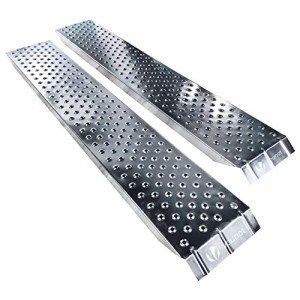Mobility Ramp
- Social Links:
Overview
-
Sectors Leisure, Travel & Tourism
-
Posted Jobs 0
-
Viewed 15
Company Description
The 10 Most Terrifying Things About Wheelchair Ramp Portable
Exploring Portable Wheelchair Ramps: A Comprehensive Guide
In a world where accessibility and mobility are paramount, portable wheelchair ramps have actually become important tools for individuals with mobility obstacles. These ramps use a practical service for browsing different environments, whether in your home, in public areas, or during travel. This blog post delves into the functions, benefits, types, and considerations when choosing a portable wheelchair ramp, in addition to a frequently asked questions section to brighten common inquiries.
What is a Portable Wheelchair Ramp?
A portable wheelchair ramp Portable ramp is a lightweight, typically foldable structure designed to offer simple access over stairs, curbs, and other elevation modifications. Unlike long-term ramps, portable variations can be easily transported and set up in numerous places, making them perfect for those who require temporary accessibility solutions.
Secret Features of Portable Wheelchair Ramps
- Lightweight Construction: Typically made from materials like aluminum, a portable ramp is developed for simple transportation.
- Foldable Design: Many designs can be folded in half or thirds, conserving space when stored or carried.
- Slip-Resistant Surface: Most ramps include textured surface areas to avoid slipping, making sure user safety during usage.
- Adjustable Length: Some ramps include adjustable legs or extended areas, allowing customization based on the height of the elevation to be browsed.
- Weight Capacity: A variety of ramps are offered with various weight capabilities to accommodate different users and their equipment.
Advantages of Using Portable Wheelchair Ramps
- Increased Independence: Portable ramps empower users, enabling them to navigate environments without needing help.
- Flexibility: They can be used in various settings– homes, cars, public locations– making them extremely versatile.
- Affordable: Compared to constructing permanent ramps, portable choices can be a more inexpensive option to satisfy ease of access needs.
- Convenience: The lightweight and foldable nature of these ramps allows users to bring them easily in lorries or keep them in tight spaces when not in use.
Kinds Of Portable Wheelchair Ramps
Below is a relative table laying out different types of portable wheelchair ramps:
| Ramp Type | Description | Pros | Cons |
|---|---|---|---|
| Folding Ramps | Can be folded in half or thirds for transport. | Compact size, easy to carry. | May need a little bit of setup time. |
| Single Fold Ramps | Lightweight, single-fold design ideal for portable use. | Easy design, lightweight. | Minimal length options. |
| Multi-Fold Ramps | Fold into smaller sized sizes for simple transport. | Outstanding for greater elevations. | Can be bulkier when completely opened. |
| Telescoping Ramps | Adjustable length; can extend based upon requirements. | Customizable length. | More expensive than static ramps. |
| Wheelchair Van Ramps | Designed specifically for cars. | Practical for car access. | Can have restricted use somewhere else. |
Factors to Consider When Choosing a Portable Ramp
When picking a portable wheelchair ramp, think about the following elements:
- Height of Elevation: Measure the height of the stairs or curb the ramp needs to navigate.
- Ramp Length: The longer the ramp, the easier the slope will be to browse. Be sure to follow the advised slope ratio, ideally 1:12 for wheelchairs.
- Weight Capacity: Ensure the ramp can support the user and any devices, such as a powered wheelchair.
- Mobility: Look for ramps that are easy to fold and transfer.
- Product: Choose lightweight but durable materials. Aluminum is popular for its strength and rust resistance.
- Surface area Texture: Ensure the ramp has a non-slip surface for user security, particularly in wet conditions.
Regularly Asked Questions (FAQ)
1. What is the suggested slope for wheelchair ramps?
The ADA (Americans with Disabilities Act) recommends a slope of 1:12 for irreversible ramps, which indicates for every inch of vertical increase, there should be at least 12 inches of ramp run.
2. Can portable ramps accommodate powered wheelchairs?
Yes, but it’s vital to confirm that the ramp has a weight capability that fulfills or exceeds the overall weight of the powered wheelchair and its user.
3. Are portable wheelchair ramps safe?
When used according to the manufacturer’s requirements and standards, portable ramps are normally safe. It’s crucial to choose ramps with non-slip surface areas and guarantee they are securely put.
4. Can I use a portable ramp for various places?
Absolutely! One of the primary advantages of portable ramps is their capability to be utilized in multiple locations, whether in the house, in vehicles, or in public areas.

5. What maintenance do portable ramps require?
Regularly examine the ramp for any signs of wear and tear, clean the surface area to maintain grip (especially after rain), and guarantee all moving parts operate properly.
Portable wheelchair ramps play an important role in improving availability and self-reliance for those with mobility challenges. Their lightweight and foldable styles permit users to browse stairs, curbs, and other barriers with ease. By considering the factors described above and understanding the different types readily available, users can select the right ramp to match their requirements. With the right portable wheelchair ramp, people can gain back confidence in their mobility, making everyday tasks much easier and more satisfying.
